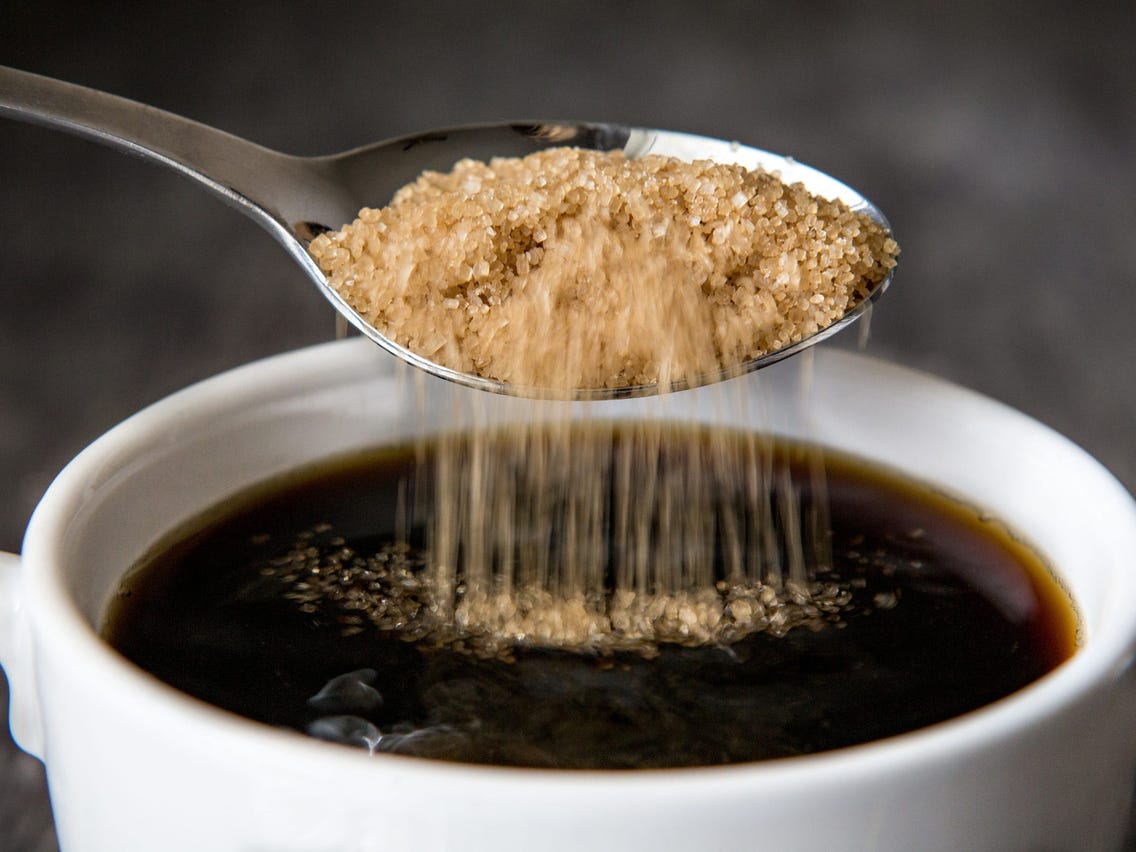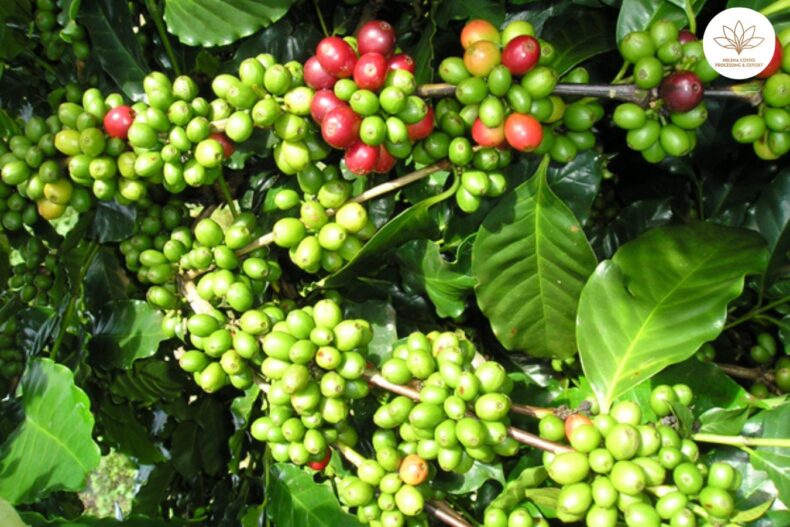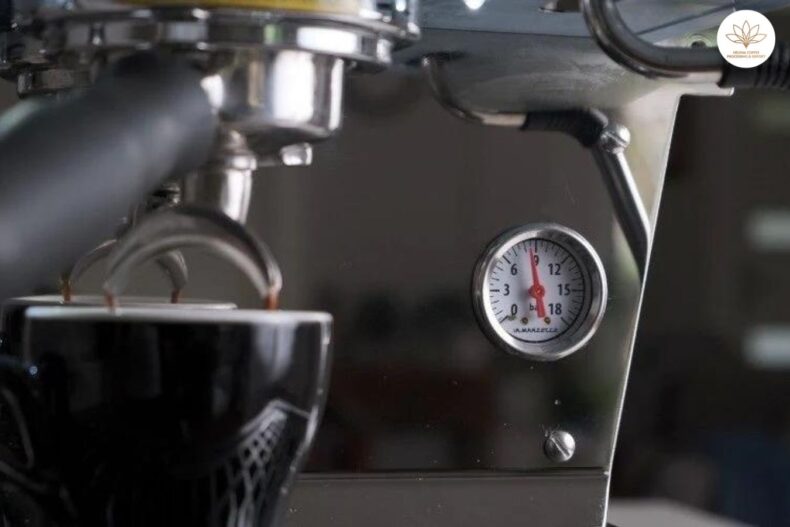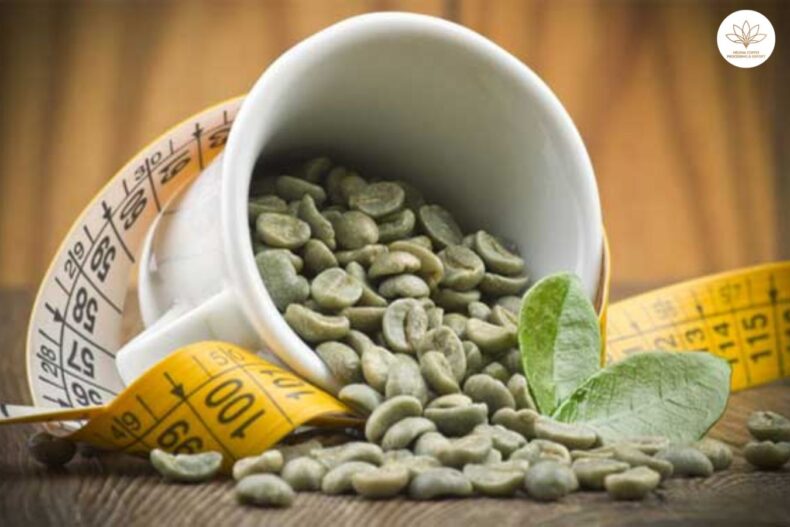
Does natural coffee processing contain more sugar than usual?

The main form of sugar in coffee beans is sucrose, which makes up 5-9% of the bean and more than 90% of the total sugar. The amount of sucrose found did not change with the processing method and instead depended on how the coffee was grown. However, naturally processed green beans contain more fructose and glucose than wet-processed (washed), so they have slightly more sugar (S Knopp et al., 2006).
But if the sugar from the rind can penetrate the skin into the dried beans, why didn’t this happen while the cherries were still on the tree? And since the sugar itself is mostly destroyed (caramelized) during roasting, where does the sweetness come from?
The first clue to what happened is that pre-processed green coffee beans’ fructose and glucose content is also higher than in wet-processed coffee. It implies that the sugar content is not increased during natural coffee processing but that sugar decreases in wet-processed coffee.
Why are washed coffee beans low in sugar?

Because during wet processing, green beans spend time in water (as part of the process), early studies suggested that sugar was dissolved in water (Wootton, 1973). However, at that time, similar changes were found in coffee that was mechanically processed and dried on a rig, so the water was not necessarily the culprit.
Instead, the researchers found that the beans were starting to sprout. This sprouting process consumes the stored sugars in the beans and uses up the most uncomplicated sugars (glucose and fructose) first. As well as affecting sucrose concentrations, sprouting in wet-processed coffee increases the concentration of specific amino acids in the bean.
Amino acids are among the essential aromatic compounds in green coffee and thus contribute to the complexity of aromas found in wet-processed coffee (S Knopp et al., 2006).
Why only wet-process coffee sprouts?
Coffee beans are always ready to germinate. Unlike many other beans, they do not have a dormant period, for example, when they are dried. It is one of the reasons it can be challenging to store coffee beans in a bean bank; instead, coffee varieties must be kept in live collections.
While the beans are still in the fruit, something in the rind, plant hormones, or just the presence of water prevents the seeds from germinating. However, as soon as the flesh is removed during fermentation, the metabolism of the bean begins to change as it prepares for germination. In a naturally processed coffee, the rind inhibits germination until the cherries are dried, at which point the bean’s metabolism is completely shut down. It preserves the sugar content in the beans.
What gives naturally processed coffee a sweet and fruity taste?

Although it is now clear that very little of any sweetener enters the bean during processing, several compounds appear to be absorbed into the bean. These are not aromas from the fruit itself but volatile compounds, predominantly esters, produced by the bacteria as the fruit begins to ferment (GV de Melo Pereira et al., 2014). These compounds (unlike most volatile compounds found in pre-processed green coffee) persist during roasting and can contribute floral and fruity aromas to roasted coffee.
Some of these esters, such as ethyl butyrate(C6H12O2), also contribute to the perception of sweetness (D. Labbe et al., 2006). Although sugars are mainly destroyed during roasting, they are also important precursors to many aroma molecules produced during caramelization, such as furan(C4H4O), making naturally processed coffee appear sweeter.
You won’t find rich, fruity coffees in your neighborhood supermarket. Those beans are almost certainly of poor quality, overly darkly roasted, and stale. Those subtle fruity flavor notes are delicate, and they are the first to fade as roasted coffee ages.
To really experience those fruity notes at their peak, you need to drink coffee within 2-3 weeks of being roasted, which is why it’s critical to buy coffee that’s sent to you immediately after being roasted.
How much sugar is in pulped natural process coffee bean?
In the first stage of harvesting, the farmer only picks the ripe coffee cherries from the tree. This is very important because when the fruit is ripe, the new mucus layer carries enough sugar and acid content to catalyze the fermentation of the coffee beans during the drying period.
The drying stage is extremely complex, requiring a perfect balance and calculation. You must not dry too quickly when the coffee beans have not yet absorbed the flavor from the mucus layer. Also can’t dry too slowly; otherwise, it will cause the coffee beans to ferment too much and end up with your beans becoming moldy, and unusable.
To achieve the perfect balance, you must control the grain parameters during the drying process. Dried coffee beans are placed on drying racks with a layer of mucus remaining on the surface of the beans, so they will stick together. To ensure that the beans achieve the required moisture, farmers must regularly spread and turn the beans throughout the drying process.
The pulped natural process usually takes a long time because each night the coffee beans reabsorb moisture from the mucus layer and the air before continuing to be dried the next morning.
Sucrose is the most common type of sugar found in coffee beans, accounting for 5-9 percent of the seed and more than 90 percent of the total sugar content. The amount of sucrose found is not affected by the processing method, but rather by how the coffee was grown. Natural processed green beans, on the other hand, contain more fructose and glucose…
Typical serving size
One serving of coffee is defined as 6 fluid ounces by the industry. It is fairly standard for 1 Tablespoon of coffee to be used to make a 6 fluid ounce cup of coffee.
Most Americans, however, drink 12 to 20 fluid ounces of coffee. A typical mug holds 12 fluid ounces. Starbucks Shorts are 8 ounces, Grandes are 16 ounces, Ventis is 20 ounces, and Ventis Iced is 24 ounces. It’s also worth noting that Starbucks uses two tablespoons of coffee for every six fluid ounces of water. We recommend starting with 1 Tablespoon and gradually increasing from there.
A 12 oz bag of Mommee Coffee contains approximately 62 servings using the standard definition of 1 Tablespoon of ground coffee for every 6 fluid ounces of water.
We do not have any specific guidelines for those of you who use reusable k-cups. We believe that starting with a tablespoon is a good place to start. You can then experiment with adding more or less to see how it affects the taste.
>>> Compare Arabica and Robusta coffee | Vietnam coffee – Helena., JSC


